We have not seen each other for months and we even celebrated Hari Raya Aidilfitri virtually for the first time in our lives, from our homes in different states.
Towards the end of the year, as the government gave Malaysians the green light for interstate travel, my siblings and I decided to travel back to Johor Bahru during Christmas to celebrate dad’s birthday.

It was a three-day full blast family activities: with birthday celebrations, dinner at Pengerang, and of course, the chance to meet up with some old friends.
The start of a nightmare
28 December 2020 was the day that we went back to our normal lives and continued to work. We actually sensed something was wrong. Both of our parents started feeling feverish and my siblings and I got it too towards New Year’s Eve.We never thought of anything apart from just the exhaustion from the gathering. I was having fever and a bit of rigors, flu and sore throat and it has been a long time since I felt under the weather.
Being a marcom manager and juggling between two hotels in two different states (Negeri Sembilan and Johor), it was very tiring, as I had to travel between those two places every other week.
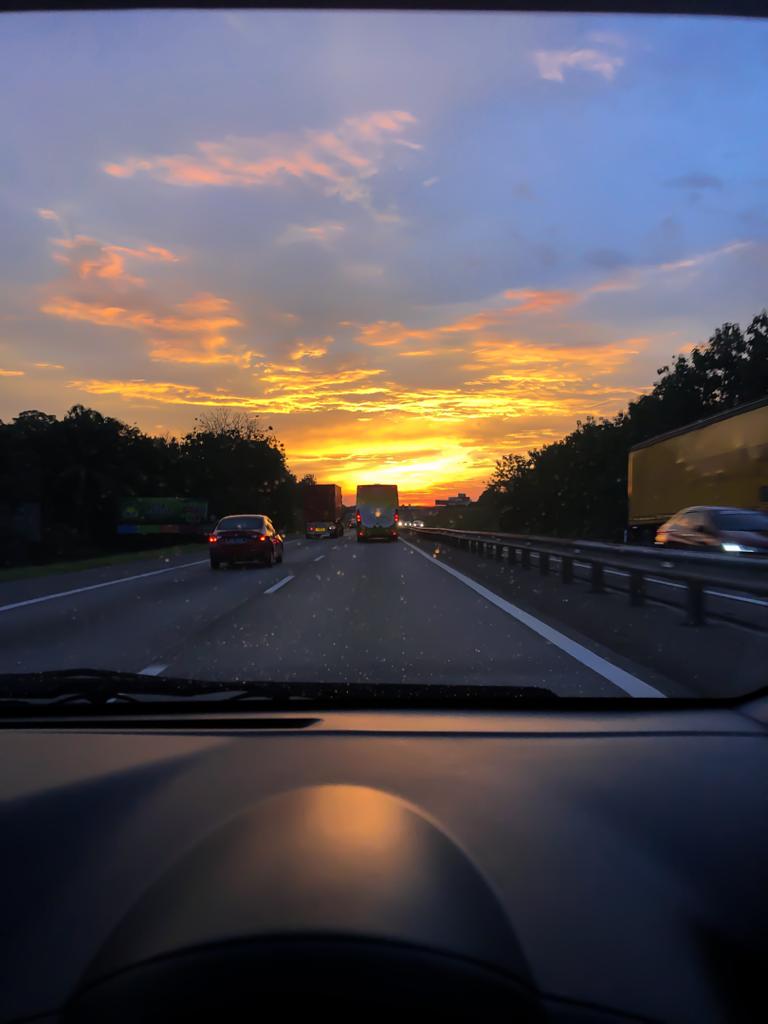
On New Year’s Eve, I sought for medical attention at a local clinic while I was outstation in Johor. The doctor didn’t suspect anything serious apart from just a ‘normal’ fever. I got myself a prescription of antibiotics and other medicine for respective sickness with one day of medical leave.
After returning to Seremban with full on rigors, my mom texted me that she lost her sense of taste. She was in denial and that it couldn’t be COVID-19 although we all knew that it is one of the symptoms. We told ourselves that it might just be something normal as end of the year was the 'season' to be sick.
On New Year’s day, I was thankful that it was a public holiday, so I got some time off to recover. Despite dealing with a blocked nose and a bad sore throat, I cooked myself my favorite breakfast menu of scrambled eggs, toast and a hot cup of coffee.

As I was sipping my coffee, I realised that something was off – the coffee was tasteless.
“This is not real. It can’t be ‘it’?”, I asked myself. I even Googled to see if there were any side effects of my antibiotic that causes the loss of taste and yes, it does.
I told myself that it couldn’t be COVID-19. Feeling curious, I sprayed some EDP perfume on my wrist to see if I could smell it but sadly, I couldn’t. Both symptoms lasted for four days after the New Year.
The day everything changed
On 5 January 2021, my eldest brother tested positive for COVID-19. The next day, while I was on my way to Johor again for my weekly work trip, his wife also announced in the family WhatsApp group chat that she tested positive too.
I decided quickly to quarantine myself at home in Johor and fetched my mom to go for a swab test in a private hospital. We alerted each other about our movements, and we did our swab tests as soon as we could.
On the morning of 7 January, as I was enjoying breakfast with mom, she received a call from the hospital to inform that her result came out positive as well.
As the conversation was put on loudspeaker, I asked the doctor about my status.
“Nur Azraa Maisara, right? Yes, you are positive COVID-19 too and I will be in contact with you shortly after your mom”, the doctor said.
It was so nerve-wrecking to hear the news, I immediately felt nauseous and it became a very stressful morning. Why? Because I do not know how I am suppose to break the news to the employers of both the hotels I am working for, as well as the friends who I have ‘lepak’ with for the past 14 days.
The tension begins as I imagine my colleagues will be in distress too, as they will be required to quarantine and undergo swab tests. Not to mention that some of my friends who I've have met with have toddlers. The responsibility and guilt were beyond bearable.
I tried to compose myself as calmly as possible when the hospital called me for tracing and investigation. After half an hour, I dialed my boss next to break the news. The day flew by as I answered calls from my boss, the Seremban Health District officer, and the hospital.
Besides that, I was dreading the countdown of when I will be ‘invited’ to take a ride in the legendary KKM ambulance.
As the days go by, it turned out that nine out of 12 adults and two out of four children tested positive in my family. Everyone in my immediate family tested positive, except for my father, grandmother, second brother and his two sons.
Ride of a lifetime
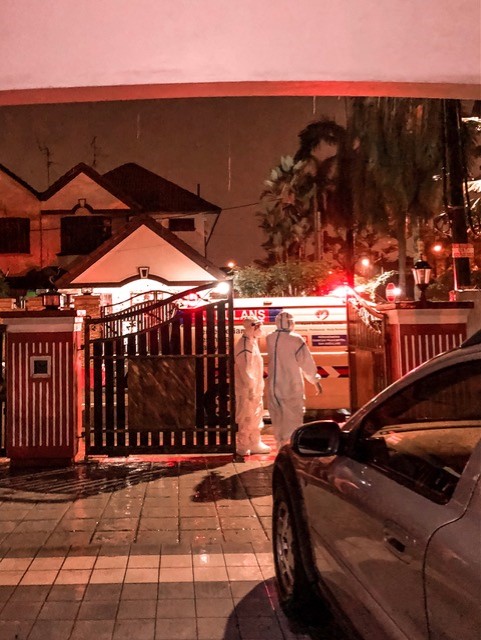
As we waited for further instructions from the Health Ministry, we were told to do home quarantine and to adhere to strict SOPs, which include isolating in our rooms, use different toilets from others in the house, to wear facemasks if movement around the house is needed, and to separate our food servings.
On the night of 10 January, I received a call from Doctor Nik of Hospital Kluang asking whether if I was aware that I will be admitted there. I told him I was aware, although I was actually 50-50 about it.
In the end, it was confirmed that I’m definitely heading to Hopsital Kluang as I have a history of asthma and mild cough. Hospital Kluang is equivalent to Hospital Sg Buloh, which houses COVID-19 patients in Klang Valley.
As I put down the phone, the doorbell rang. Another ‘all hell breaks loose’ moment as my mom shouted, “The ambulance is here and they are fetching both of us! Pack your stuff!”
Never have I ever, in my life, packed my clothes and all necessary items in under five minutes for a five-night stay at the hospital. I ended up a medium-sized luggage, a medium tote bag, my personal handbag and a bucket of sweat.
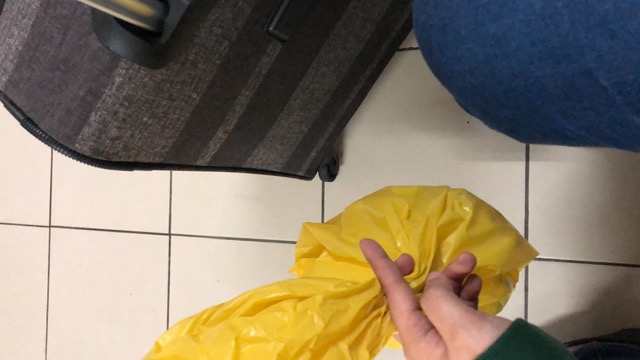
At about 9.45pm, while drizzling outside, my mom and I departed for the Kluang Hospital. Along the way, I vomited because God knows how fast the ambulance driver was driving to send us to the hospital. It was an embarrassment for me, but looking back, I can't help but laugh at myself.
We arrived at the hospital almost at midnight and was immediately admitted to the children’s ward with six other ladies and four children. I changed into the hospital robes and made myself comfortable on a single reclining sofa bed, which was my bed for my five-night stay at the hospital.
Thus, my hospital experience begins.
Treatment begins

Every morning, we were subjected to a routine checkup and were asked to walk along the corridor as light exercise. As my case is related to bronchial asthma and mild cough, I was asked to do a series of checks to prevent a possible asthma attack.
I noticed that during each new patient admission, the patient would undergo several compulsory tests such as a pregnancy test, a blood sample test, an X-ray, and a heart condition test via the electrocardiogram (EKG) machine.
Now, the million dollar question: what are the treatments given to combat COVID-19?
COVID-19 patients admitted to the hospital commonly had fever, flu, sore throat, cough, diarrhea, headache, and breathing difficulties, to name a few. The doctors will prescribe medicines that are only related to each sickness, such as paracetamol for fever or any body aches, loratadine for flu, lozenges for sore throat, expectorant for cough, inhalers, nebulizers or oxygen tubes for breathing difficulties or asthma, and so on. That’s all!
There were no special red or blue tablets like from 'The Matrix' movie were given to treat COVID-19.
.jpeg)
I was given prednisolone, an anti-inflammatory steroid tablets (just for two days) and a higher dose inhalers to reduce my bronchial asthma until I was discharged. Those who are already on prescription medicine, even before being tested for COVID-19 -- just like my mother who is on Crestor to reduce her cholesterol levels -- can continue their medication.
.jpeg)
Besides getting the necessary treatment and rest for recovery, I have to give credit to the doctors and nurses in the hospital and all the frontliners out there who are tirelessly working to save the world!
I got a first-hand view of them in their complete PPE outfit; in fact, even the janitors and cleaners are in full PPE too, cleaning our toilets and wards at least twice a day. These superheroes are working around the clock while we are sleeping soundly.
At the hospital ward, every one cooperated to wake up at 3am to be checked and monitored by the doctors and the nurses. Some of us asked if they have had enough sleep and rest, although in the back of our minds, we know they didn’t.
I love to joke around with them during my routine checks, and I found them to be quite gullible behind their extremely exhausted facial expressions. In crucial times like these, this is where we come through and give them the support that they need.
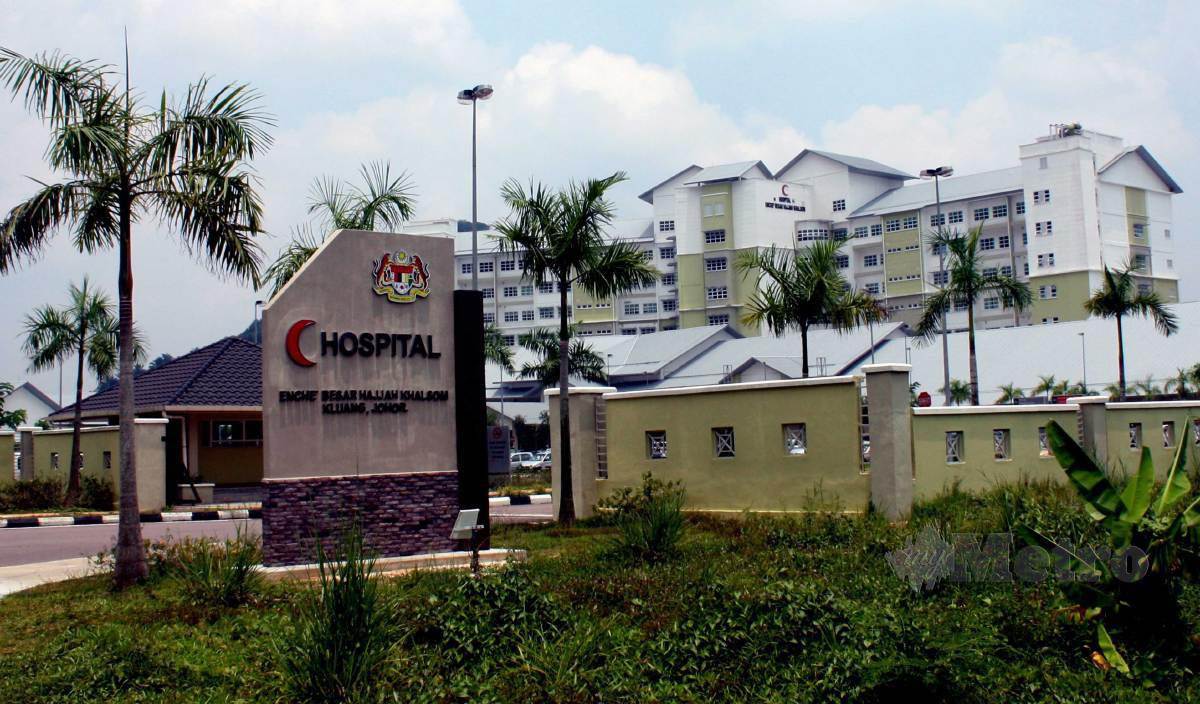
What is it like to be a COVID-19 patient in a hospital, you ask?
Besides getting treatment, we just live our lives by resting, resting, and more resting until discharge day. Most mothers will attend to their restless children, some ladies may be wandering around the ward corridor for a friendly chit-chat with other patients, kids may be running around to find whatever fun available, some just read books or binge watch videos on YouTube.
I am mostly connected with my friends and families via WhatsApp and calls throughout the day and definitely enjoying a daily afternoon nap that I have always longed to do when I was working.
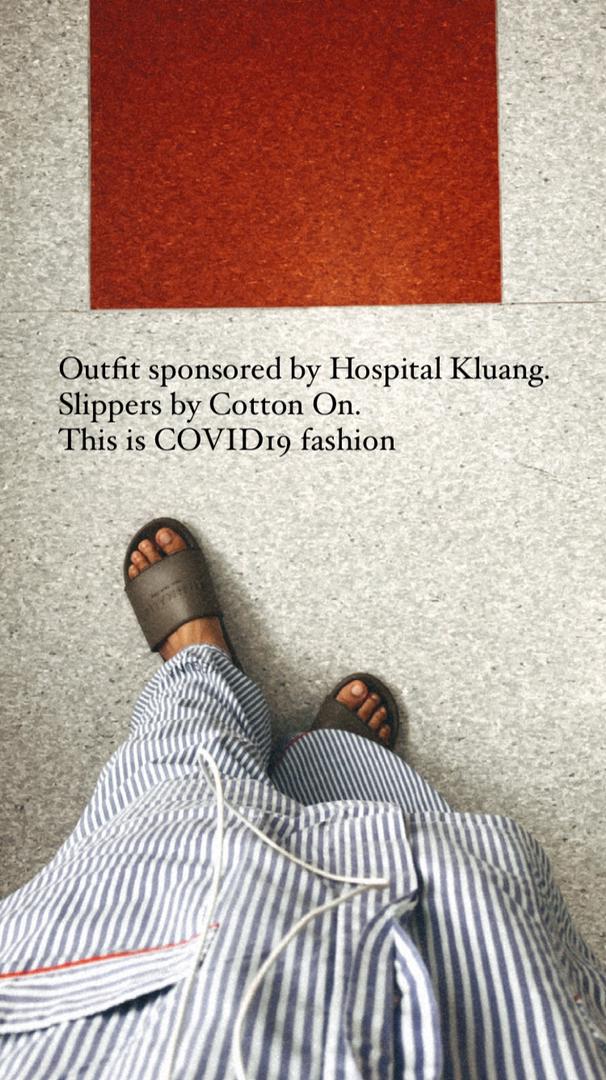
Although I came prepared with my suit cases, we were given a choice of wearing hospital robes and not our own clothes we brought from home to reduce contamination. The hospital robes were replenished daily, fresh and clean from the dryers.
The blue and white striped robes quickly became a staple and a COVID-19 fashion statement for us.
Five star meals, five star hospitality

Now, let’s talk about something almost everyone are skeptical of – hospital meals.
We always hear that hospital meals are somehow tasteless to a point. Surprisingly for me, it was the total opposite. In fact, I named them as ‘Lauk Kenduri’. I kid you not, as lunch and dinner meals were absolute five-star gastronomy experience albeit them being traditional ‘kampung’ dishes.
Ayam Masak Merah with Kubis Air, Ikan Tenggiri Bakar Kunyit with Kangkung soup, Ikan Keli Berlado and Ayam Gulai Lemak Cili Padi were among the dishes I was served and enjoyed and ultimately, I also got to eat Nasi Hujan Panas with Ayam Masak Merah on the very day I was due to be discharged from the hospital.
The meals were packed in a plastic container inside a tagged big plastic bag. The nurses will announce the arrival of meals and each ward representative will then distribute them to every patient.
I was not particularly worried for my mother, who was admitted in another ward two floors up, because special condition patients were also being fed generously, despite their diet that were different from us.

And don’t worry if you suddenly feel hungry at any time of the day, as each ward comes with a designated counter which I call the ‘Counter of Miscellaneous’. It is a place where patients can grab bottles of plain water, assorted biscuit packets, a variety of premix coffee and tea sachets, extra hot water flasks, water jugs, and hospital robes.
The items were complimentary and I do know deep down that these were either provided by the hospital itself or came from kind-hearted donors out there.
Racing to the finish line
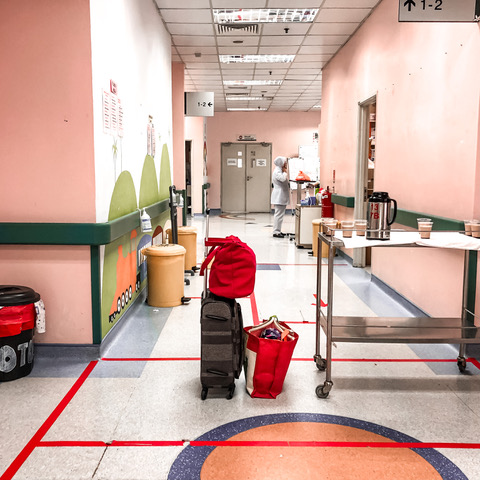
On my fourth night, one of the doctors informed me that I could be discharged on 15 January. The hospital gave patients the options of either have someone to fetch you back home, or you could use e-hailing service. In case of none, the hospital may offer to send you home via an ambulance but that subjected to availability.
The discharge day was an important occasion for me as my mom and I are almost reaching the finish line. While the doctors reviewed both our health condition and progress, they still advised us to finish another four days of quarantine at home and we were given the Home Surveillance Order (HSO) white wristband.
Assuming that our early departure may also be another factor to give way for those in need, we religiously followed the proper SOPs at home and we diligently isolated ourselves in our own rooms again.
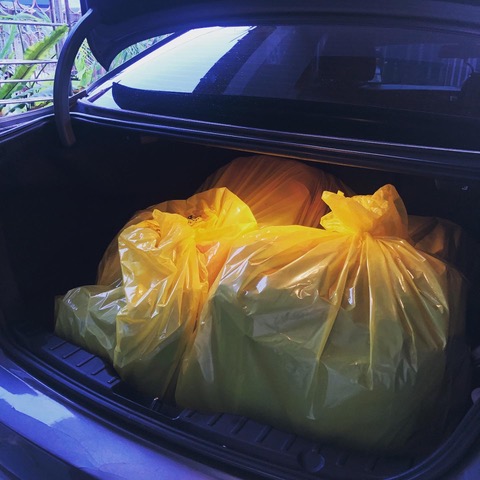
As part of the discharge procedure, our luggage and bags were decontaminated and wrapped in yellow biohazard or clinical waste plastic bags. Patients will then need to sanitise their hands and shoes. Upon exiting, my mom and I were each given a discharge note with a summary of our recovery progress before we were given our freedom back.
On 20 January, we reached the finish line! We were instructed to go to Johor Bahru District Health Office to remove the HSO wristband and to attain the HSO release order.
We were asked to fill up an a final assessment form to declare that we have regained our normal health condition and should there be any symptoms in future, we will need to contact the district health officer for reassessment.
Both mom and I enjoyed the day with a cup of ice cream as a pat on our backs that we are finally in the pink of health again.
How I fought COVID-19
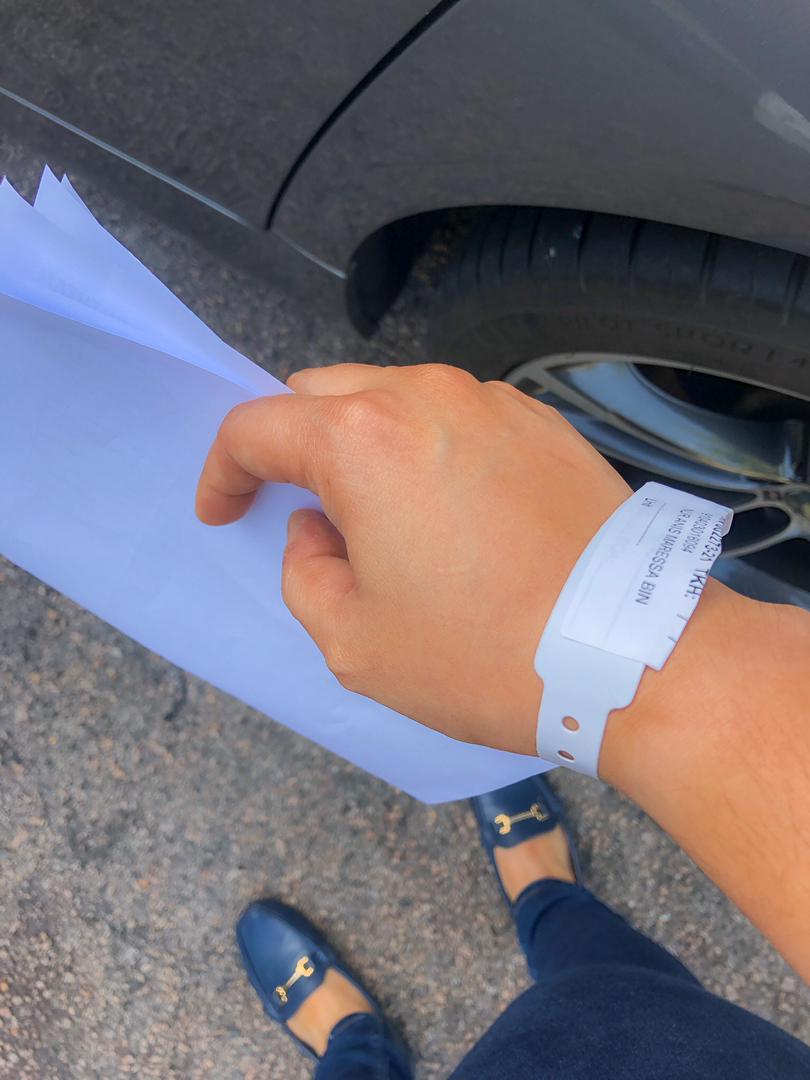
Throughout the days that I was diagnosed with COVID-19, there were a few things that kept me going to reach a full recovery. I had to maintain a positive mind and accept the circumstances despite the stigma from my surroundings.
The day that I went for the swab test was also the day I received a couple of inconvenience text messages from colleagues at work, who were deemed as close contacts of mine.
Most of them blamed me as the main cause of bringing the virus into the workplace, which led to them inconveniently quarantined for 14 days and being separated from their family members.
There were also those who pointed the finger at me and told me that I was selfish to continue working despite having all the symptoms.
It turns out that their swab tests came back negative while my family and I had to suffer rough health conditions before being tested. Little that they know, I have nieces aged five and two years old who were tested positive, which made our family members beyond worried.
My family and I have been praying a lot and we hope that nobody else will contract the virus from us as we knew that the number of cases were rapidly growing nationwide.
It was very disheartening, but throughout our recovery, all of us have been showered with full support, love and positive vibes from our friends and family. Some even performed daily check on us, which I found rather amusing and sweet.
I was also glad to know that I am also surrounded by great and positive minds in the hospital. We accepted our fates and believed that we will get better in no time. After seeing that some of my friends who were tested positive on social media as well, I reached out to them and told them my experience as I fear that they might be feeling lost of saddened by the news.
In times like these, different people experience different challenges and stigma. The least we can do is just to pray for their speedy recovery, or tell them these three words; “Get Well Soon”. That is sufficient enough.
The public needs to stop playing the ‘who’s to blame’ game and be nicer to those who tested positive instead. Reach out to those in need, seek proper information and guideline in curbing the spread, wear your face mask correctly and practice good hygiene at all times.
We are living in a critical time now and we will never know if the virus is already knocking at our door, trying to find a little crack which may lead us to getting infected.
Let’s pray that Malaysia, and also the whole world, will heal fast from this deadly pandemic.
COVID-19 survivor,
Azraa Maisara
Story has been edited for length and clarity.
